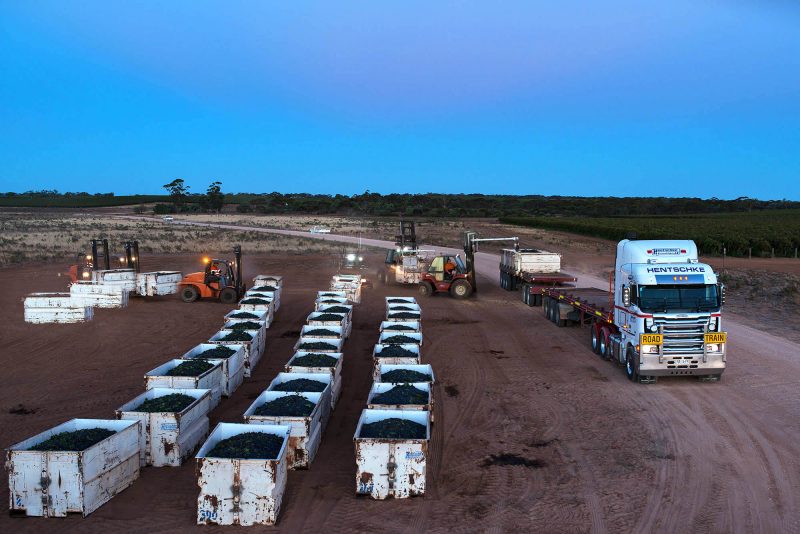Image: Cold Ridge. Photo courtesy of Riverland Wines. Photo by Italo Vardaro
More than 1.5 million tonnes of winegrapes were crushed across Australia in 2020 and most of these were transported to wineries by heavy vehicles using public roads.
With heavy vehicle use comes extensive legal obligations of drivers, wineries, grapegrowers and vineyard contractors for ensuring the safe transportation of goods.
This is referred to as the Chain of Responsibility (CoR) obligations under the Heavy Vehicle National Law.
Obligations include ensuring that goods are not overloaded, that they are secured properly and that drivers are not encouraged or pressured to speed or drive while fatigued.
Of particular concern are grape spills on public roads which can create a community safety hazard.
To help the wine industry address these issues, a new Registered Industry Code of Practice is being developed by the South Australian Wine Industry Association (SAWIA) in partnership with Australian Grape & Wine (AGW).
Development of the code over the next two years is possible thanks to funding from the 2020-21 Heavy Vehicle Safety Initiative, supported by the Australian federal government and administered by the National Heavy Vehicles Regulator (NHVR).
To develop the Code, SAWIA and AGW will engage with members of the wine supply chain in 23 regions across Australia in 2020/21 to discuss key issues and solutions in relation to heavy vehicle transportation.
The first round of industry meetings will be carried out across SA wine regions between 9 November and 17 December (Adelaide Hills, Langhorne Creek, McLaren Vale, Clare, Coonawarra and Riverland).
Sessions in Victoria, New South Wales, Tasmania, Queensland and Western Australia will follow in 2021.
Following these meetings, a draft Wine Industry Code of Practice will be created and released for industry feedback.
A final Wine Industry Code of Practice will be released by the end of 2021. Stage two of the project will see training delivered across the 23 regions in 2022-23, to ensure all members of the wine supply chain understand the practical steps they can take to meet their heavy vehicle obligations.
SAWIA chief executive Brian Smedley said heavy vehicle use was a key part of the wine supply chain.
“At a large winery in the Riverland wine region in South Australia, for example, there can be up to 10,000 truck deliveries over an eight-week vintage period,” Smedley said.
“We know there were 30 grape spills in Barossa and Riverland in 2019. Across Australia, that number would be much higher. These spills constitute a public safety risk and methods for reducing that risk must be explored.”
AGW chief executive Tony Battaglene said the project was an opportunity for the Australian wine industry to be at the centre of the development of the code of practice.
“This is a great opportunity for all members of the wine industry to collaborate to develop measures that can be adopted nationally to ensure the safe transportation of grapes, byproducts and finished wine on public roads, so that we comply with the Chain of Responsibility laws,” Battaglene said.
NHVR CEO Sal Petroccitto said heavy vehicle safety is everyone’s responsibility.
“Through local safety programs, supported by local experts, we can make our roads safer for all road users,” Petroccitto said.
“We’re looking forward to working with the South Australian Wine Industry Association and Australian Grape & Wine to deliver safety outcomes for all road users in grapegrowing regions of Australia.”
Are you a Daily Wine News subscriber? If not, click here to join our mailing list. It’s free!





















